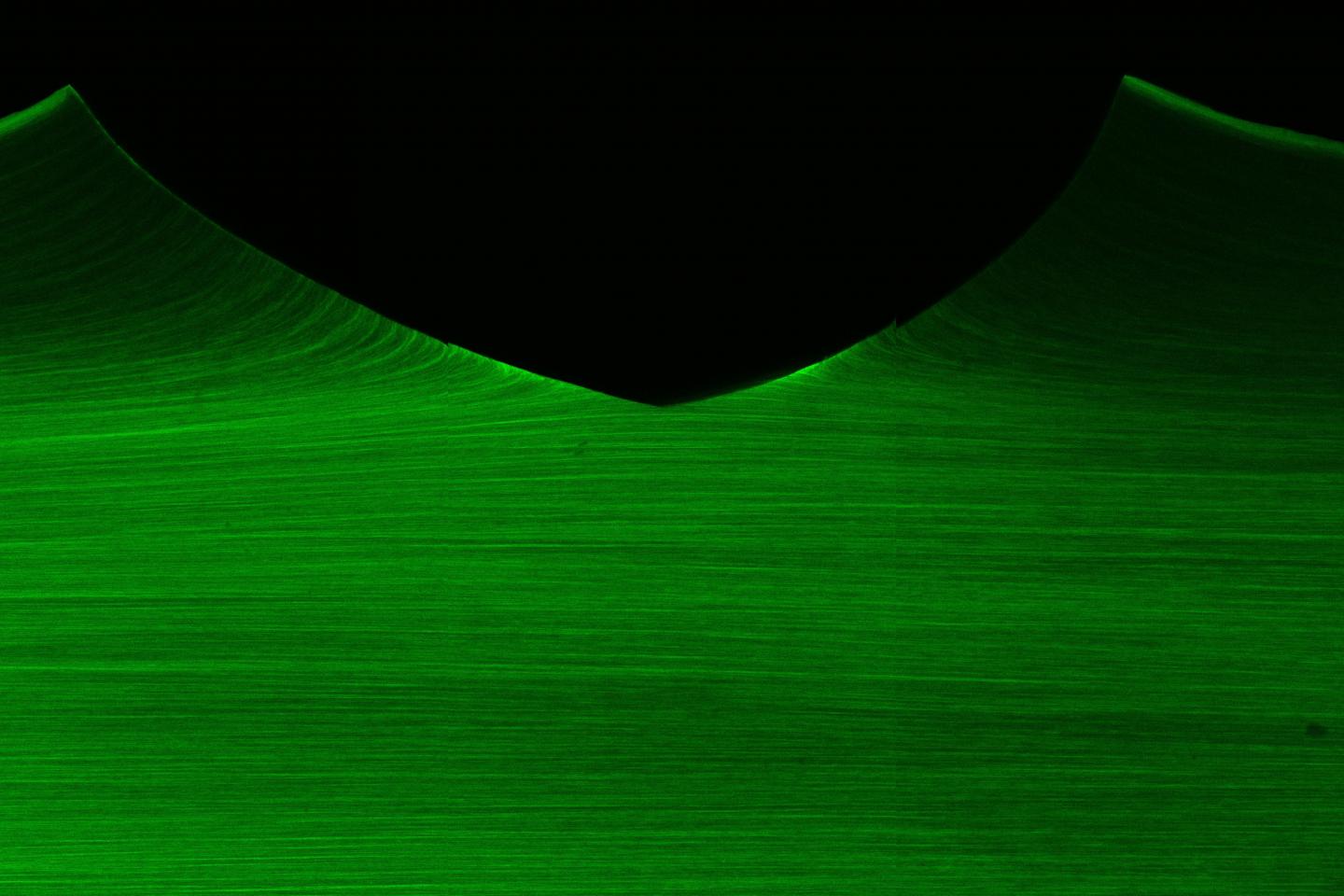Mechanical ‘training’ produces strong, fatigue-resistant, yet soft hydrogels with possible uses in medicine

Credit: Image: Ji Liu, Shaoting Lin, and Xinyue Liu
Human skeletal muscles have a unique combination of properties that materials researchers seek for their own creations. They’re strong, soft, full of water, and resistant to fatigue. A new study by MIT researchers has found one way to give synthetic hydrogels this total package of characteristics: putting them through a vigorous workout.
In particular, the scientists mechanically trained the hydrogels by stretching them in a water bath. And just as with skeletal muscles, the reps at the “gym” paid off. The training aligned nanofibers inside the hydrogels to produce a strong, soft, and hydrated material that resists breakdown or fatigue over thousands of repetitive movements.
The polyvinyl alcohol (PVA) hydrogels trained in the experiment are well-known biomaterials that researchers use for medical implants, drug coatings, and other applications, says Xuanhe Zhao, an associate professor of mechanical engineering at MIT. “But one with these four important properties has not been designed or manufactured until now.”
In their paper, published this week in the Proceedings of the National Academy of Sciences, Zhao and his colleagues describe how the hydrogels also can be 3-D-printed into a variety of shapes that can be trained to develop the suite of muscle-like properties.
In the future, the materials might be used in implants such as “heart valves, cartilage replacements, and spinal disks, as well as in engineering applications such as soft robots,” Zhao says.
Other MIT authors on the paper include graduate student Shaoting Lin, postdoc Ji Liu, and graduate student Xunyue Liu in Zhao’s lab.
Training for strength and more
Excellent load-bearing natural tissues such as muscles and heart valves are a bioinspiration to materials researchers, but it has been very challenging to design materials that capture all their properties simultaneously, Zhao says.
For instance, one can design a hydrogel with highly aligned fibers to give it strength, but it may not be as flexible as a muscle, or it may not have the water content that makes it compatible for use in humans. “Most of the tissues in the human body contain about 70 percent water, so if we want to implant a biomaterial in the body, a higher water content is more desirable for many applications in the body,” Zhao explains.
The discovery that mechanical training could produce a muscle-like hydrogel was something of an accident, says Lin, the lead author of the PNAS study. The research team had been performing cyclic mechanical loading tests on the hydrogels, trying to find the fatigue point where the hydrogels would begin to break down. They were surprised instead to find that the cyclic training was actually strengthening the hydrogels.
“The phenomenon of strengthening in hydrogels after cyclic loading is counterintuitive to the current understanding on fatigue fracture in hydrogels, but shares the similarity with the mechanism of muscle strengthening after training,” says Lin.
Before training, the nanofibers that make up the hydrogel are randomly oriented. “During the training process, what we realized is that we were aligning the nanofibers,” says Lin, adding that the alignment is similar to what happens to a human muscle under repeated exercise. This training made the hydrogels stronger and fatigue-resistant. The combination of the four key properties appeared after about 1,000 stretching cycles, but some of the hydrogels were stretched over 30,000 cycles without breaking down. The tensile strength of the trained hydrogel, in the direction of the aligned fibers, increased by about 4.3 times over the unstretched hydrogel.
At the same time, the hydrogel demonstrated soft flexibility, and maintained a high water content of 84 percent, the researchers found.
The antifatigue factor
The scientists turned to confocal microscopy to take a closer look at the trained hydrogels, to see if they could discover the reasons behind their impressive anti-fatigue property. “We put these through thousands of cycles of load, so why doesn’t it fail?” Lin says. “What we did is make a cut perpendicular to these nanofibers and tried to propagate a crack or damage in this material.”
“We dyed the fibers under the microscope to see how they deformed as a result of the cut, [and found that] a phenomenon called crack pinning was responsible for fatigue resistance,” Ji says.
“In an amorphous hydrogel, where the polymer chains are randomly aligned, it doesn’t take too much energy for damage to spread through the gel,” Lin adds. “But in the aligned fibers of the hydrogel, a crack perpendicular to the fibers is ‘pinned’ in place and prevented from lengthening because it takes much more energy to fracture through the aligned fibers one by one.”
In fact, the trained hydrogels break a famous fatigue threshold, predicted by the Lake-Thomas theory, which proposes the energy required to fracture a single layer of amorphous polymer chains such as those that make up PVA hydrogels. The trained hydrogels are 10 to 100 times more fatigue-resistant than predicted by the theory, Zhao and his colleagues concluded.
###
The research was supported, in part, by the National Science Foundation, the Office of Naval Research, and the U.S. Army Research Office through the Institute for Soldier Nanotechnologies at MIT.
Related links
ARCHIVE:
Magnetic, 3-D-printed structures crawl, roll, jump, and play catch
ARCHIVE:
Engineers 3-D print a “living tattoo”
ARCHIVE:
Stretchy optical fibers for implanting in the body
ARCHIVE:
Living sensors at your fingertips
ARCHIVE:
New gel coatings may lead to better catheters, condoms
Media Contact
Abby Abazorius
[email protected]
Original Source
http://news.



